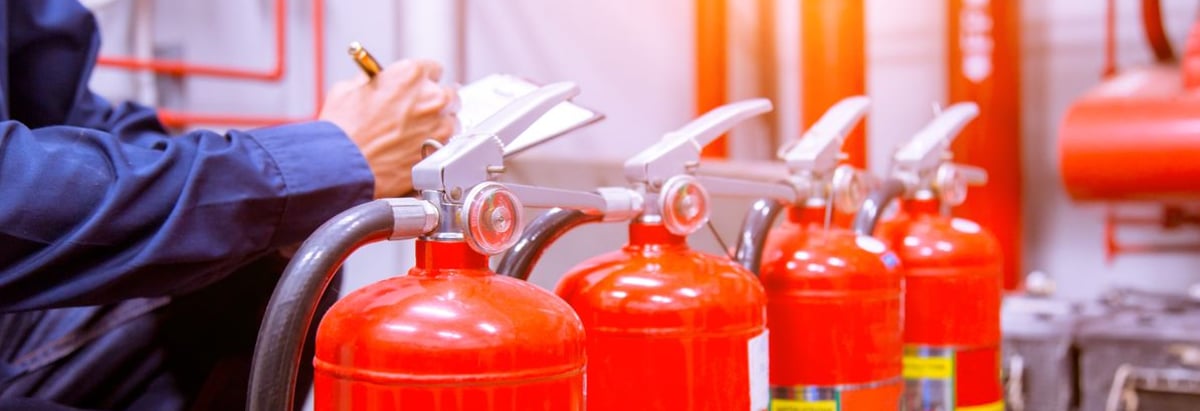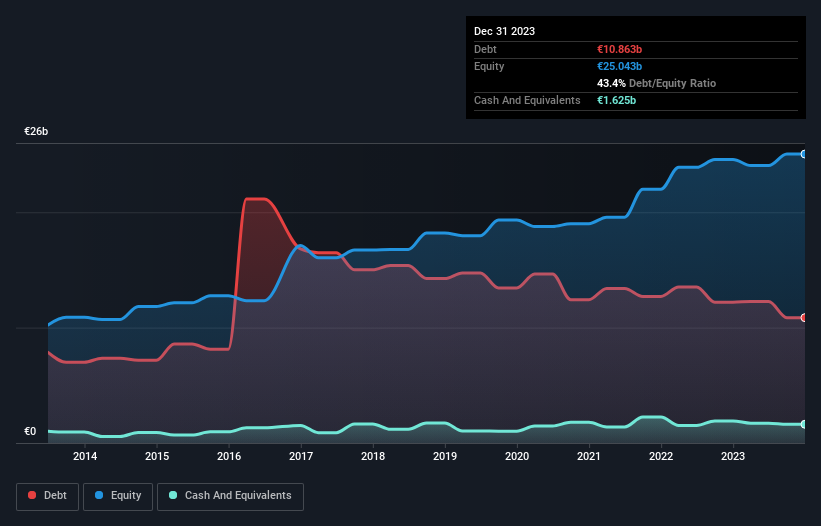These 4 Measures Indicate That L'Air Liquide (EPA:AI) Is Using Debt Reasonably Well

David Iben put it well when he said, 'Volatility is not a risk we care about. What we care about is avoiding the permanent loss of capital.' When we think about how risky a company is, we always like to look at its use of debt, since debt overload can lead to ruin. As with many other companies L'Air Liquide S.A. (EPA:AI) makes use of debt. But should shareholders be worried about its use of debt?
What Risk Does Debt Bring?
Debt assists a business until the business has trouble paying it off, either with new capital or with free cash flow. In the worst case scenario, a company can go bankrupt if it cannot pay its creditors. While that is not too common, we often do see indebted companies permanently diluting shareholders because lenders force them to raise capital at a distressed price. Of course, the upside of debt is that it often represents cheap capital, especially when it replaces dilution in a company with the ability to reinvest at high rates of return. The first thing to do when considering how much debt a business uses is to look at its cash and debt together.
View our latest analysis for L'Air Liquide
What Is L'Air Liquide's Debt?
You can click the graphic below for the historical numbers, but it shows that L'Air Liquide had €10.9b of debt in December 2023, down from €12.2b, one year before. On the flip side, it has €1.62b in cash leading to net debt of about €9.24b.

A Look At L'Air Liquide's Liabilities
The latest balance sheet data shows that L'Air Liquide had liabilities of €8.85b due within a year, and liabilities of €14.4b falling due after that. On the other hand, it had cash of €1.62b and €3.04b worth of receivables due within a year. So it has liabilities totalling €18.6b more than its cash and near-term receivables, combined.
Since publicly traded L'Air Liquide shares are worth a very impressive total of €98.1b, it seems unlikely that this level of liabilities would be a major threat. Having said that, it's clear that we should continue to monitor its balance sheet, lest it change for the worse.
In order to size up a company's debt relative to its earnings, we calculate its net debt divided by its earnings before interest, tax, depreciation, and amortization (EBITDA) and its earnings before interest and tax (EBIT) divided by its interest expense (its interest cover). Thus we consider debt relative to earnings both with and without depreciation and amortization expenses.
L'Air Liquide's net debt is only 1.3 times its EBITDA. And its EBIT easily covers its interest expense, being 15.8 times the size. So you could argue it is no more threatened by its debt than an elephant is by a mouse. The good news is that L'Air Liquide has increased its EBIT by 4.1% over twelve months, which should ease any concerns about debt repayment. There's no doubt that we learn most about debt from the balance sheet. But ultimately the future profitability of the business will decide if L'Air Liquide can strengthen its balance sheet over time. So if you want to see what the professionals think, you might find this free report on analyst profit forecasts to be interesting.
Finally, while the tax-man may adore accounting profits, lenders only accept cold hard cash. So it's worth checking how much of that EBIT is backed by free cash flow. Over the most recent three years, L'Air Liquide recorded free cash flow worth 60% of its EBIT, which is around normal, given free cash flow excludes interest and tax. This free cash flow puts the company in a good position to pay down debt, when appropriate.
Our View
The good news is that L'Air Liquide's demonstrated ability to cover its interest expense with its EBIT delights us like a fluffy puppy does a toddler. And its conversion of EBIT to free cash flow is good too. When we consider the range of factors above, it looks like L'Air Liquide is pretty sensible with its use of debt. While that brings some risk, it can also enhance returns for shareholders. Over time, share prices tend to follow earnings per share, so if you're interested in L'Air Liquide, you may well want to click here to check an interactive graph of its earnings per share history.
At the end of the day, it's often better to focus on companies that are free from net debt. You can access our special list of such companies (all with a track record of profit growth). It's free.
New: AI Stock Screener & Alerts
Our new AI Stock Screener scans the market every day to uncover opportunities.
• Dividend Powerhouses (3%+ Yield)
• Undervalued Small Caps with Insider Buying
• High growth Tech and AI Companies
Or build your own from over 50 metrics.
Have feedback on this article? Concerned about the content? Get in touch with us directly. Alternatively, email editorial-team (at) simplywallst.com.
This article by Simply Wall St is general in nature. We provide commentary based on historical data and analyst forecasts only using an unbiased methodology and our articles are not intended to be financial advice. It does not constitute a recommendation to buy or sell any stock, and does not take account of your objectives, or your financial situation. We aim to bring you long-term focused analysis driven by fundamental data. Note that our analysis may not factor in the latest price-sensitive company announcements or qualitative material. Simply Wall St has no position in any stocks mentioned.
About ENXTPA:AI
L'Air Liquide
Provides gases, technologies, and services for the industrial and health sectors in Europe, the Americas, the Asia Pacific, the Middle East, and Africa.
Adequate balance sheet average dividend payer.


